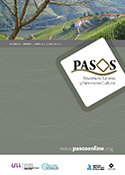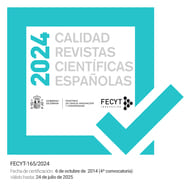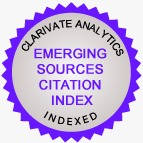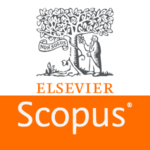Má imagem e estratégias de selecção e adaptação para a diversificação do turismo: o caso das casas de hóspedes ou Gasthof del Altmühlsee (Alemanha)
DOI:
https://doi.org/10.25145/j.pasos.2016.14.006Palavras-chave:
Diversificação Turística,, Selecção e Adaptação de Empresas, Geografia Económica Evolutiva, Má Imagem, Casas de Hóspedes.Resumo
O artigo analisa as estratégias de selecção e adaptação empresarial de Gasthof como alojamento turístico no lago conhecido como Altmühlsee (Alemanha), uma região com uma significativa actividade turística que tem sido ameaçada pela má imagem da imprensa local como consequência da abundância de algas azuis tóxicas nos seus lagos. Para consegui-lo, retoma elementos da geografia económica evolutiva baseada na abordagem darwiniana para compreender os mecanismos que permitiram o surgimento das estratégias das empresas locais da região que as levaram a adaptar e diversificar a sua oferta turística apesar das circunstâncias.
Traduzido com a versão gratuita do tradutor - www.DeepL.com/Translator
Downloads
##plugins.generic.pfl.publicationFactsTitle##
##plugins.generic.pfl.reviewerProfiles## Indisp.
##plugins.generic.pfl.authorStatements##
##plugins.generic.pfl.indexedIn##
-
##plugins.generic.pfl.indexedList##
- ##plugins.generic.pfl.academicSociety##
- PASOS. Revista de Turismo y Patrimonio Cultural
- ##plugins.generic.pfl.publisher##
- Instituto Universitario de Investigación Social y Turismo. Universidad de La Laguna (España) - Instituto Universitario da Maia ISMAI (Portugal)
Referências
Ahmed, Z. 1991. “Marketing your community Correcting a negative image”. The Cornell Hotel and Restaurant
Administration Quaterly, 31(4): 24-27. Alain, d. 1999. “Triangulation in qualitative tourism research”. Tourism Management, 20(1): 157-161. Amin, A. 1999. “An institutionalist perspective on regional economic development”. International Journal of Urban and Regional Research, 23: 365-378.
Bathelt, H. y Glückler, J. 2011. The Relational Economy: Geographies of Knowing and Learning. Oxford: Oxford University Press.
Berli, A. y Martin, J. 2004. “Factors influencing destination image”. Annals of Tourism Research, 31(3): 657–681.
Bigné, E. 2004. “ Nuevas orientaciones del Márketing Turístico”. Papeles de Economía Española (102): 221-235.
Bigné, E., Sánche, M.I y Sánchez, J. 2001. “Tourism image, evaluation variables and after purchase behaviour: inter-relationship”. Tourism Management, 22: 607–616.
Blenckner, T., Adrian, R., Livinstone, D., Jennings E., Enckner, L, Weyhenmeyer, G., George, D.G, Jankowski, T., Järvinen, Rvinen, M.,Aonghusa, C., Noges, T., Straile, D. y Teubner, K. 2007. ”Large-scale climatic signatures in lakes across Europe: a meta-analysis”. Global Change Biology, 13(7): 1314-1326.
Boschma, R. y Martin, R. 2010. “The aims and scope of Evolutionary Economic Geography”. En Boschma, R. y Martin, R. (Eds.), The Handbook of Evolutionary Economic Geography (pp. 3-43). Massachusetts: Edward Elgar Publishing.
Brouder, P. y Eriksson, R. 2013. “Tourism evolution: on the synergies of tourism studies and evolutionary economic geography”. Annals of Tourism Research, 43: 370–389.
Callot, P. 2006. Tourisme et PME. Paris: Hermes Science Lavoisier.
Canfield, D. y Hoyer, M.V. 1988. “The Eutrophication of lake Okeechobee”. Lake and Reservoir Management, 4(2): 91-99.
Cooke, P. y Laurentis, C. 2010. “The Evolutionary Economic Geography: Regional Systems of Innovation and High-Tech Clusters”. En Boschma, R. y Martin, R. (Eds.), The Handbook of Evolutionary Economic Geography (pp. 239-257). Massachusetts: Edward Elgar Publishing.
Corey, R. J. 1996. “A drama-based model of traveler destination choice”. Journal of Travel and Tourism Marketing, 5(4): 1-22
Creswell, J. y Miller, D. L. 2000. ”Determining validity in qualitative inquiry, theory into practice”. Theory into practice 39(3): 124-130.
Daft, R. 2007. Teoría y diseño organizacional. México: Thomson.
Dann, G. M. 1996. “Tourists images of a destination -An alternative analysis”. Journal of Travel and Tourism Marketing, 5(1/2): 41-55.
Denzin, N. K. 1978. “The research act: A theoretical introduction to sociological methods. New York: McGraw-Hill
Echtner, Charlotte M. y Brent Ritchie, J.R. 1991. “The Meaning and Measurement of Destination Image”. The Journal of Tourism Studies, 14,1 (3): 37-48.
Eisenhardt, K. 1989. ”Building theories from case study research”. The Academy of Management Review, 14(4): 532-550.
Gallarza, M., Gil Saura, I. y Calderón Garcia, H. 2002. “ Destination image: towards a conceptual framework”. Annals of Tourism Research, 29 (1): 56-78.
Guba, E. 1990. “The Alternative Paradigm Dialogue”. En Guba, Egon (Eds.), The Paradigm Dialogue (pp. 17-27). Newbury park: Sage.
Hardy, A. 2005. “Using Grounded Theory to explore Stakeholder perceptions of tourism”. Journal of Tourism and Cultural Change, 3(2): 108-133.
Hjalager, A. 1996. “Agricultural diversification into tourism: evidence of a European community development programme”. Tourism Management, 17(2): 103-111.
Hopfinger, H. 1998. “Das neue Fränkische Seenland-ein Erfolgreiches Großprojekt für Freizeit, Wasserwirtschaft und Landschaftsgestaltung”. Geographische Rundschau, 50(9): 508-514.
Jones, G. 2004. Organizational Theory, design, and change: text and cases. Upper saddle river (N.J.): Pearson Prentice Hall.
Kurmayer, R. 2006. “Bedingungen und Steurung der Toxin Produktion bei Cyanobakterien –aktueller Stand der Forshunge”. En: Morscheid, H., Fromme, H., Krause, D., Kurmayer, R., Morscheid y Habil, K. (Eds.) Heiketoxinbildende cyanobakterien (blaualgen) in Bayerischen Gewässern. Massenentwicklung, Gefährdungspotenzial, Wasserwirtschaftlicher Bezug (.pp. 113-143). Augsburg: Bayerisches Landesamt für Umwelt.
López Bonilla, J. M. Y López Bonilla, L.M. 2007. “Diferencias territoriales en la planificación y la gestión del destino turístico”. Cuadernos de Turismo, 19: 71-90.
Ma, M., y Hassink, R.
”An evolutionary perspective on tourism area development”. Annals of Tourism Research, 41: 89–109.
Markwell, K. W. 1997. “Dimensions of photography in a nature-based tour”. Annals of Tourism Research, 24: 131-155.
Marti, B. E. 1995 ”Marketing aspects of consumer purchasing behavior and customer satisfaction abroad the Royal Viking Queen”. Journal of Travel and Tourism Marketing, 4(4): 109-116.
Metcalfe, J.S. 2005. “Systems failure and the case for innovation policy”. En Llerena, P. y Matt, M. (Eds), Innovation Policy in a Knowledge Based Economy (pp. 47-74). Berlin: Springer.
Ministerio de Relaciones Económicas, Infraestructura, Transporte y Tecnología de Bavaria [Bavarian Ministry of Economic Affairs, Infrastructure, Transport and Technology] 2012. “Tourism in Bavaria: Data, Facts, Figures”. Munich: Bavarian State Government. Disponible en: http://www.verwaltung.bayern.de/egov-portlets/xview/anlage/4047137/ (consultado: 08/07/2013).
Opperman, M.. 1996. “Rural tourism in southern Germany”. Annals of Tourism Research, 23(1): 86-102.
Opperman, M. 1997. “Rural tourism in Germany: farm and rural tourism operators”. En Page, S. y Getz, D. (Eds.) The Business of Rural Tourism: international perspectives” (pp.108-118). Boston: International Thomson Business Press.
Papatheodorou, A. 2004. “Exploring the evolution of tourism resorts”. Annals of Tourism Research, 31(1): 219–237.
Robson, C. 1993. Real World Research. Oxford: Blackwell.
Sánchez, A. y Alburquerque, F. 2003. ”El turismo cultural y el de sol y playa: ¿sustitutivos o complementarios?”. Cuadernos de Turismo, 11: 97-105.
Shaw, G. y Williams, A. M. 1994. Critical issues in tourism: a geographical perspective. Basil: Blackwell. Shrenk-Bergt, C., Krause, D., Prawitt, O.,Lewandowski y J., Steinberg, C. 2004. “Eutrophication problems and their potential solutions in the artificial shallow lake Altmühlsee (Germany)”. Studia Quaternaria, (21): 73-86.
Stam, E. 2010. “Entrepreneurship, Evolution and Geography”. En Boschma, R. y Martin, R. (Eds.), The Handbook of Evolutionary Economic Geography (pp. 139-161). Massachusetts: Edward Elgar Publishing.
Xiao H. y Smith S. L. J. 2006. “Case studies in tourism research: a state-of-the-art analysis”. Tourism Management, 27: 738–749
Witt, U. 2003. The Evolving Economy: Essays on the Evolutionary Approach to Economics. Cheltenham, UK y Northampton, MA, USA: Edward Elgar.
Downloads
Publicado
Como Citar
Edição
Seção
Licença
Confirmo que o trabalho é original (de minha/nossa autoria), e que não será submetido a outras revistas ou publicações até a resolução final do processo de revisão em PASOS, RTPC.
Autorizo a publicação do meu trabalho por PASOS, PSTN de acesso livre e aberto em qualquer dos formatos que considere oportuno, por tempo indeterminado e como colaboração não remunerada.
Da mesma forma, o(s) autor(es) entende(m) que o trabalho publicado pode ser vinculado ou depositado em qualquer servidor ou incluído em outras publicações (republicação), desde que o novo local e/ou a nova edição façam referência à publicação original e reconheçam a autoria e propriedade de direitos autorais das publicações PASOS RTPC.
Os autores entendem que uma verificação de plágio autoplágio será realizada, e o artigo poderá ser removido a qualquer momento do fluxo editorial.










